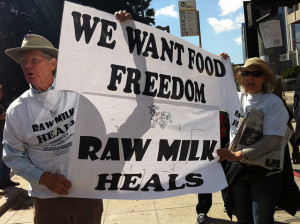Another feature of the annual golf trip to Newport News, Virginia, was at least one dinner at Golden Corral.
Golden Corral is a chain restaurant that encapsulates the essence of American excess,  specifically, endless, cheap food.
specifically, endless, cheap food.
The golf trip organizer, Jeff, a man of Chris Christie proportions, made attendance at the Golden Corral dinner a prerequisite for participation on the trip: no Golden Corral, stay at home.
But there can be problems with that volume of food being served.
According to the Wyoming Billings-Gazette, more than 50 reports of foodborne illness have been made to the Natrona County Health Department this week and fingers are pointing to the Golden Corral restaurant in east Casper as the source of the outbreak.
Health department director Bob Harrington and other department officials conducted an on-site inspection at the restaurant Wednesday. There were sanitation inspections and interviews with employees and management. The Denver-based owner of the restaurant was on location throughout the day working with Health Department officials.
“We are doubling down on all of our safety and sanitary procedures that are normally done,” said David Giesen, president of franchisee Golden DBL Inc. of Denver.
Giesen said he had been cooperating with the Health Department’s investigation.
“Food safety is our highest priority,” he said.
Harrington and Giesen said the cause of the outbreak cannot definitively be connected to the restaurant. It could be a normal virus affecting the community at large, Giesen said.
The department is interviewing people and collecting specimens in its investigation and should have the results in a week, Harrington said.
“We’re pretty close to calling it a virus,” Harrington said. “If it’s what we think it is, it’s norovirus.”
Reports of vomiting and diarrhea have been widespread in Casper, and linking the people, time frame and exposure is what takes a while, Harrington said.
Brain Beall and his family went to the restaurant on Saturday night.
 “Early Sunday morning and in the afternoon my entire family was sick,” he said.
“Early Sunday morning and in the afternoon my entire family was sick,” he said.
They had norovirus symptoms, he said.
When Beall went to pick up a plate at the buffet line, he noticed the bottom was dirty. He picked up more than 25 plates — all were dirty with the remains of food, he said. He spoke to an employee.
“He told me the dishwasher was broken,” Beall said.
Beall lives in Douglas and said the Casper food poisoning outbreak is the talk of the town. He was in a local grocery store Wednesday morning and spoke with four other people who went to Golden Corral over the weekend and became ill.
Even after they saw the unsanitary conditions, Beall said he and his family still ate at the restaurant.
“I am kicking myself in the butt for that. I should have walked away,” he said.
 After a number of Johnson County Fair participants fell ill with stomach cramps and diarrhea, the Department of Health requested stool samples from five people and was able to confirm that all five were suffering from the same type of salmonella.
After a number of Johnson County Fair participants fell ill with stomach cramps and diarrhea, the Department of Health requested stool samples from five people and was able to confirm that all five were suffering from the same type of salmonella.









 persons who participated in the event, the patients are the only two known to have used their teeth to castrate lambs. During the multiday event, a few lambs reportedly had a mild diarrheal illness. Neither patient with laboratory-confirmed illness reported consumption of poultry or unpasteurized dairy products, which are common sources of exposure to C. jejuni. The patients resided in separate houses and did not share food or water; none of their contacts became ill.
persons who participated in the event, the patients are the only two known to have used their teeth to castrate lambs. During the multiday event, a few lambs reportedly had a mild diarrheal illness. Neither patient with laboratory-confirmed illness reported consumption of poultry or unpasteurized dairy products, which are common sources of exposure to C. jejuni. The patients resided in separate houses and did not share food or water; none of their contacts became ill..jpg) The
The .jpg) She said there was no evidence that the bacteria was food-borne, and water tests came back negative.
She said there was no evidence that the bacteria was food-borne, and water tests came back negative.